In recent years, quite a lot of currant varieties have appeared that are quite resistant to certain diseases. But, if resistance to certain diseases increases, then at the same time there is an increase in the susceptibility of bushes to other pathogens. There are no varieties yet that are absolutely resistant to most of the most common diseases.
Black currant plumpness
Description of the disease. Incurable viral disease of currants. Most often it affects black currants. White and red are more resistant, although some varieties (especially older ones) can be affected by the virus. The source of infection is the bush itself, infected planting material, and garden tools that were not treated before pruning. The virus overwinters in the conducting tissues of the bush. Its carriers are bud mites, aphids, gall midges, berry bugs, spider mites and other pests. The virus is not transmitted through soil or water. The disease is extremely dangerous, it causes degradation of varietal qualities and leads to degeneration of currants. Therefore, its second name is currant reversion.
Signs of defeat. A sign by which it can be determined that a bush is infected even before the full picture of the disease appears is the loss of the typical currant smell of the buds, leaves and berries.
External signs of the disease appear in the spring when the leaves bloom and currants bloom. The leaf opening is delayed, they become three-lobed instead of 5-lobed, with large, sparse teeth along the edges. The emerging young leaves are small, dark green, with thickened veins; they do not develop further.
A characteristic sign of doubleness, by which the disease is determined, is the structure of the flowers. Typically, black currant petals are fused, round, and white. Diseased bushes have separate-petalled flowers that become purple in color. Petals, stamens, and pistil are deformed, and scales are formed instead, resembling tentacles extended forward. The flower clusters become longer and also turn a dirty pink or purple color.Berries from such flowers either do not set at all, or a small number of small, ugly fruits appear. Bushes that are sick with double bloom bloom late.
On diseased plants, a lot of thin and short shoots appear that do not have a currant smell.
The first signs begin to appear 1-2 years after infection. Before this, the bushes have a normal appearance, although the currant smell becomes weak, and the yield is somewhat less than that characteristic of the variety; a few berries are ugly in shape. Over time, signs of terry disease increase, and the disease develops very gradually.
Sometimes there is an incomplete picture of the disease, in which the tips of the shoots or individual branches are affected. The upper leaves are underdeveloped, small, dark green, three-lobed, asymmetrical. The berries on such branches are small and fewer than on healthy plants, and sometimes the fruits are not set at all.
Control measures. Terry is incurable. If signs of the disease are detected, diseased bushes are removed and burned, otherwise the entire plantation can be infected. In place of removed bushes, currants cannot be planted for 5 years, not only black ones, but also red and white ones. The fight against the virus is ineffective because it does not destroy plant tissue, but invades the cell, as a result of which it loses its normal functions and begins to produce a virus. To kill it, you need to kill the cell, and this is impossible without killing the entire bush.
Prevention of disease.
- If there were diseased plants on the plantation, then before pruning the remaining bushes, garden tools must be treated with alcohol or a strong solution of potassium permanganate.
- Pest control.They carry the virus with saliva to healthy crops.
- There is a recommendation to use healthy planting material. But by the appearance of cuttings and seedlings it is impossible to determine whether they are healthy or infected with terry. Infected 2-year-old seedlings look quite healthy; only the smell, which is rather weak for black currants, can be alarming. The disease manifests itself only during the growth and development of bushes. To prevent the disease, varieties resistant to terry are planted: Pamyat Michurina, Dubrovskaya, Binar, Nara, Primorsky Champion, Lia Fertile, Zhelannaya. The black currant varieties Zagadka, Odzhebin (Swedish variety), and Alexandrina are not resistant to the disease. Of the red currants, the Red Cross and Shchedraya varieties are very susceptible to terry.
Green mottle
Description of the disease. A viral disease of currants, the causative agent of which is the cucumber mosaic virus. Affects all types of currants. The disease spreads quite slowly in plantings. The source of infection is about 60 species of various plants, including weeds, as well as infected planting material. Its main carrier is aphids.
Signs of defeat. When black currants bud, pale green dots appear on young leaves. In summer they turn into watery streaks stretched along the veins. Sometimes, instead of strokes, pale green spots appear, which occupy large areas of the sheet and are very clearly visible in transmitted light.
In red and white currants, instead of light green streaks, pale yellow spots appear near the petiole. The spots can be large, but are always located in the central part of the leaf.The leaves are severely deformed, wrinkled, and their edges curl down. Most often, with yellowing of the leaves on red and white currants, young shoots dry out.
In young bushes and rooted cuttings, the first signs appear the next year after planting. If currants are propagated by seeds, the disease appears in the same year.
The bushes begin to lag behind in growth, the yield decreases.
Control measures. Green mottle is incurable. When the first signs appear, the bushes are uprooted and burned.
Disease prevention.
- Control of weeds that are affected by the virus (bindweed, sow thistle, woodlice, quinoa). Pumpkin should not be planted next to bushes, as it is also susceptible to the disease.
- Destruction of aphids in the garden.
Glass rust
Description of the disease. The causative agent is a pathogenic fungus. Its spores overwinter on sedge plant remains, withstand severe frosts, and in the spring they are carried by the wind to currants. Affects ovaries, berries, leaves. All types of currants and gooseberries are susceptible to damage. The disease is very common in the North-Western regions and the middle zone. The disease progresses especially strongly in wet years, when 70-78% of leaves and 40-45% of ovaries on black currants and 57-68% on red currants are affected.
Signs of defeat. At the end of May and beginning of June, yellow, slightly convex spots appear on the leaves and petioles on the upper side. Sporulation of the fungus with goblet-shaped depressions appears on the lower side. As the spores mature, they scatter, causing a new infection. Affected leaves and ovaries fall off by mid-summer.
How to treat the disease.
- Autumn treatment of tree trunk circles, collection and destruction of affected leaves.
- In the spring, before the buds open, they are treated with 3% Bordeaux mixture or HOM. When buds open, treatment is carried out with a 1% solution of drugs.
- Before the buds open, they are treated with nitrafen (if you can find it, the chemical is not commercially available). The drug is effective against many diseases and pests, but it cannot be used after sap flow begins. Spray the branches and water around the perimeter of the bushes.
- When the first signs appear, they are sprayed with Topaz, Skor, and the biological product Fitosporin.
Folk remedies for fighting glass rust. The most popular of them is spraying with an infusion of tobacco dust and garlic. The mixture is prepared as follows: 200 g of tobacco dust is infused for 3 days in 2 liters of water; A glass of cloves is poured with 2 liters of boiling water and left for 3 days. Then everything is mixed, household ingredients are added. soap as an adhesive, add hot pepper on the tip of a knife. The bushes are sprayed with this solution until the buds open.
Prevention.
- Mowing sedge within a radius of 500 meters from the site.
- Planting fairly resistant currant varieties. There are no varieties that are absolutely resistant to rust yet, but there are those that are very weakly affected by the disease. From black currants these are Sevchanka, Selechenskaya 2, Bylinnaya, Veloy, Kipiana. From red - Detvan, Beloved, Dana; from white - Smolyaninovskaya, Minusinskaya white.
- During the season, preventive spraying of currants with biological products (Gamair, Alirin B, Fitosporin) is carried out.
Columnar rust
The causative agent is a pathogenic fungus. It overwinters on Weymouth pine and Siberian cedar, and in the spring it infects berry bushes. Plantings located near coniferous forests are especially affected.
Signs of defeat. Signs of the disease begin to appear in mid-summer. Yellow-brown spots appear on the leaves on the upper side, which can then merge. On the lower side, rusty growths appear - these are pads with fungal spores, which subsequently stretch into hairs or columns. Diseased leaves turn yellow and fall off, leaving the bush bare.
How to spray currants against columnar rust.
- In the spring, spray three times with copper-containing preparations. The first treatment is done when the buds open, the second - 10-14 days after the first, the third - 2 weeks after the second. If the weather is very rainy, then carry out the fourth spraying after 12-17 days.
- Spraying with Fitosporin three times with an interval of 10-15 days.
Traditional methods of fighting the disease.
- Spraying with a mixture of infusions of tobacco dust and garlic.
- Spraying with soda solution. 3 tablespoons of soda are poured into 10 liters of water, add liquid soap. Spraying is carried out at the onset of the disease. It is also necessary to treat the leaves on the underside, where the spores ripen.
Prevention.
- In early spring, before the snow has melted, they pour boiling water over the bushes.
- Timely cutting out all diseased and damaged branches.
- In areas prone to severe spread of the disease (lowlands, forests), varieties resistant to rust are planted.
Powdery mildew
Description of the disease. Another name for spheroteca, from the Latin name of a pathogenic fungus. Affects black, red and white currants and gooseberries. A very insidious currant disease, if not dealt with, can completely destroy the plantation in 1-3 years. The parasite overwinters on plant debris and in the bark of affected shoots. Infestation can occur throughout the summer.Favorable conditions for the spread of powdery mildew are warm and humid weather. In hot, dry summers the disease manifests itself much less. Thickened bushes and plantings where increased doses of nitrogen fertilizers were used are more susceptible to the disease.
Signs of defeat. A white cobwebby coating appears in the form of spots on the leaves of diseased currants, which spreads very quickly. After 3-5 days, the plaque thickens, acquires a brown-gray tint, becomes felt-like, and spores form in it. After they disperse, droplets of liquid remain (hence the name). The leaves stop developing, turn brown and dry out, and the shoots become deformed. The berries become covered with a felt coating and become unsuitable for food.
When widespread, young growth develops poorly, becomes thin and deformed, and the yield is greatly reduced or completely lost. The disease significantly reduces the winter hardiness of currants.
Treatment of currants.
The disease is very difficult to completely eradicate.
- At the first signs of damage, spraying with copper-containing preparations (HOM, Ordan) is carried out. Bordeaux mixture is ineffective against powdery mildew. Before spraying, remove all infected berries, leaves, and shoots.
- Treatment of plantings with colloidal sulfur and preparations based on it (Tiovit Jet). Treatment can be carried out 3-4 days before picking berries, since sulfur and its derivatives are not toxic to humans.
- Spraying with Skor, Quadris, Tilt. With the constant appearance of powdery mildew on varieties susceptible to it, 4-fold treatment with these drugs is carried out.! spraying after the leaves bloom before flowering; 2nd - immediately after flowering; 3rd - after picking berries; 4th 10-14 days after the third. If the summer is very wet, then 15-17 days after the last spraying, another treatment is carried out.
When treating with any preparation, it is necessary to spray the leaves from the underside. The disease is very difficult to eradicate. The pathogen quickly develops resistance to fungicides, making them ineffective. To prevent this from happening, spray with a new drug each time.
Folk ways to combat powdery mildew.
- Spraying with iodine. 10 ml of 5% iodine solution (sold in a pharmacy), diluted in 10 liters of water. Spray twice with an interval of 10 days. Effective in the initial stage of the disease, when arachnoid plaque has just appeared.
- Mustard infusion. 2 tbsp. spoons of dry mustard are dissolved in 10 liters of boiling water, left for 1-1.5 hours. The treatment is carried out with a cooled infusion.
- Spraying diseased currant bushes with a very strong solution of potassium permanganate. Carry out 3-fold treatment with an interval of 5 days.
- Ash-soap solution. 1 kg of wood ash is poured into 10 liters of boiling water and left for 24-48 hours. Then the infusion is filtered, 50 g of soap is added and the diseased bushes are sprayed. The treatment is repeated after 7-10 days. The method is effective only at the very beginning of the disease.
Prevention.
- Moderate pruning of infected plantings and, at the same time, complete cutting out of all unnecessary weak young branches, especially in the lower part of the bush, since powdery mildew begins from the lower branches and primarily affects young leaves and shoots.
- Preventive “blue” spraying in the spring when leaves bloom with preparations containing copper.
- In early spring, before the buds open, spray with a concentrated solution of urea (700-800 g of urea per 10 liters of water).
- 4-fold treatment during the growing season with biological products (Fitosporin, Gamair, Alirin B, Planriz.
- Planting varieties resistant to powdery mildew. Black-fruited varieties include Riddle, Zvezdnaya, Selechenskaya, Yadrenaya, Rita, Sevchanka. From the red ones - Svetlana, Krasnaya Andreichenko, Jonker Van Tets. From white - Dessert, White squirrel, Cream.
- Mandatory reduction in doses of nitrogen fertilizers.
Anthracnose
Description of the disease. The causative agent is a pathogenic fungus. Overwinters on plant debris, damaged bark and young shoots. Affects all types of currants and gooseberries. On black, as a rule, only leaves are affected; on red and white, leaf petioles, stalks, young shoots and berries are affected. It develops especially strongly in damp but hot summers and in the southern regions. In the middle zone it appears in mid-summer; in the south it can be observed as early as May. In dry summers, anthracnose damage is minimal. Spore carriers are pests. Fungal spores are easily spread by wind.
Signs of defeat. First, light brown glossy spots appear on the affected leaves, which then turn brown and merge with each other, affecting large areas of the leaf plate. The leaves curl upward, dry out and fall off prematurely. First of all, the old leaves in the center of the bush are affected, then anthracnose spreads to younger leaves. If the disease is severe, currants may lose all their foliage by August.
Brown-gray small ulcerated depressions appear on the affected petioles, young shoots and stalks. Small black, glossy spots appear on the berries.Affected fruits fall off without ripening. The growth of annual shoots slows down greatly and they grow poorly.
If leaves are damaged on red and white currants, the bushes drop their foliage, even if there are only a few spots of anthracnose on it.
The winter hardiness of affected plants is sharply reduced. In cold winters, up to 50% of bush branches can freeze. Productivity is falling sharply.
How the disease is treated.
- If the damage is minor, remove the affected parts manually.
- Spraying 4 times during the summer with preparations containing copper. The first treatment is carried out before the buds open. Then, at intervals of 10-14 days (depending on the weather), 3 more treatments are done.
- Cleaning up fallen leaves and plant debris.
- Careful weeding of currant rows.
- In the early stages, biological products (Fitosporin, Alirin B) help well. The same preparations are used to spray bushes when berries are damaged. Biofungicides are not dangerous to humans and the crop can be harvested 2-3 days after treatment.
- Autumn treatment of the soil around plants with the biological product Trichoderma.
Folk remedies they are ineffective against anthracnose and if the disease appears on currants, chemicals must be used immediately.
Prevention.
- Annual spraying of bushes with preparations containing copper.
- Use varieties that are resistant to anthracnose. Black currant - Lazy, Sevchanka. Red - Generous, Svetlana. White - Belaya Potapenko, Yutenberg.
- Before planting, cuttings are disinfected by immersing them in a solution of copper sulfate for 5 minutes, then washed with water. The seedlings are sprayed with the same solution.
- Proper nutrition.Foliar feeding in summer increases the resistance of currants to diseases in general and anthracnose in particular. Use a phosphorus extract, or prepare a complex fertilizer: 1 tbsp. spoon of superphosphate, 2 tbsp. spoons of potassium sulfate, immunocytitis 1 tab, water 10 l. Spray the leaves from the top and bottom sides.
Septoria or white spot
The disease is caused by a pathogenic fungus that overwinters on young shoots, plant debris and bark. It affects black currants very strongly, and to a lesser extent red and white ones.
Signs of defeat. Leaves, buds, and sometimes berries are affected. The first signs appear at the beginning of summer, the peak of development occurs in the second half of summer. Very small round or angular red-brown spots appear on the leaves. They quickly enlarge, lighten in the center and become white with a brown border. Black dots appear in their center - this is the sporulation of the fungus. Over the summer, several generations of spores are formed.
Elongated spots with a brown border and light in the center appear on the petioles and stems. Subsequently, the stains are pressed into the wood and form small pits.
Small flat dark spots appear on the berries, and the fruits dry out.
With septoria, the leaves dry out and fall off en masse, the bush becomes depleted, and the buds do not open. The yield of affected bushes is greatly reduced.
How to deal with white spotting.
- Collecting and burning affected leaves, berries, shoots.
- Three-time treatment with copper-containing preparations during the summer. The first spraying after the leaves bloom, subsequent sprayings at intervals of 12-15 days.
- Treatment with systemic fungicide Bayleton.
Prevention. If the bushes suffer from a disease every year, then feeding with microelements at the beginning of the growing season helps increase resistance. Also, they are treated with the immunostimulant Zircon.
Tubercular disease or drying out of branches (nectria necrosis)
Description of the disease. Currant disease is caused by a fungus that settles on damaged wood. It affects red currants very strongly, is much less common on black currants, and also affects many trees and shrubs. The parasite persists in the bark. The development of the disease is favored by damage to the bark and wet summers.
Signs of defeat. The spores fall on young 2-4 year old shoots and germinate into the wood. The mycelium feeds on cell sap. Brick-red dots (sporulation pads) appear on the bark, which gradually darken and dry out. The bark on the affected branches dies, the tips of the shoots, and sometimes entire infected branches dry out and die. The young growth dies, the currant grows poorly and does not lay flower buds (since in red currant they are laid at the border of older and younger wood).
Control measures should be taken immediately, since the disease enters the garden through red currants and can then spread to all shrubs and fruit trees (apple, plum, cherry).
- Cut all affected branches to the base. If the bush is severely damaged, it is uprooted, even if there are healthy shoots on it. All cut branches are immediately burned, as the fungus can still develop on the dead wood for some time and disperse the spores.
- Treatment of plantings with Topsin-M.The drug has a contact-systemic effect, penetrates the wood and kills the mycelium. Apply once per season, as addiction to it quickly develops.
Prevention.
- Use healthy planting material, without damage to the bark, bare and drying tips of the shoots.
- Spraying with preparations containing copper. When infected, this remedy is ineffective, since the mycelium penetrates deep into the wood. But as a preventive measure, copper-containing preparations perfectly protect shrubs from disease.
- Removing all branches located close to the ground. They are often damaged during soil cultivation and serve as a potential entry point for the pathogen.
Marginal necrosis of currant leaves
This is not a disease as such, but a reaction of currants to excess chlorine in the soil. Occurs on all types of currants and gooseberries.
Signs of defeat. The edges of the leaves become light brown or ashy in color and dry out. There is a sharp border between dried and healthy tissue; the leaves do not curl, but acquire a lighter shade. The symptoms are similar to those of potassium starvation, but the distinctive feature of excess chlorine is that the leaves do not wrinkle or curl and there is a clear boundary between the healthy and affected parts. With a lack of potassium, the leaves wrinkle and curl upward, but do not fall off; there is no clear boundary between healthy and diseased tissue.
Control measures. Immediate feeding with ammonium nitrate. It is necessary to ensure that the fertilizer reaches the roots quickly, which can be achieved by abundant watering after application or deep incorporation of the fertilizer.
Proper care of currants significantly increases its resistance to any diseases.
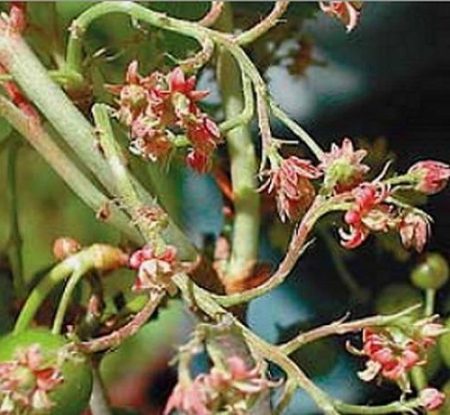
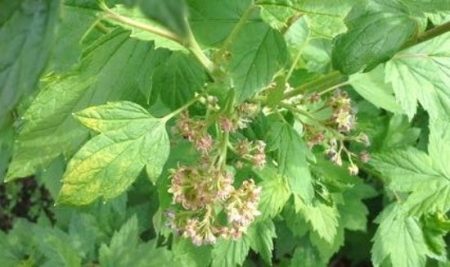
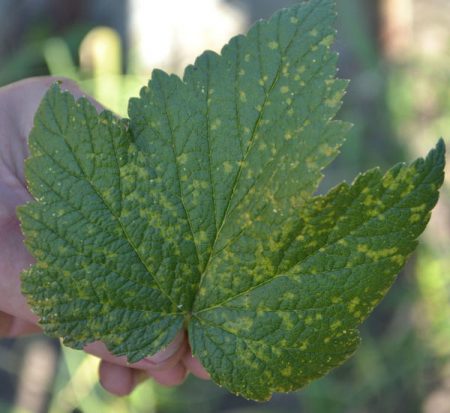
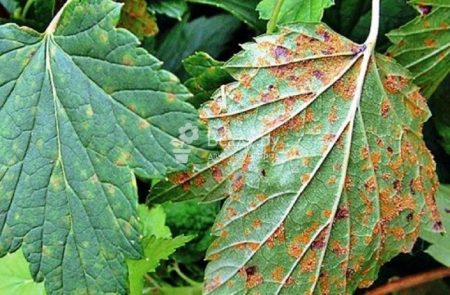
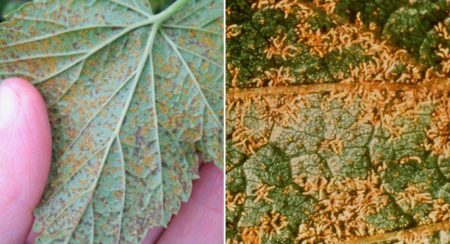

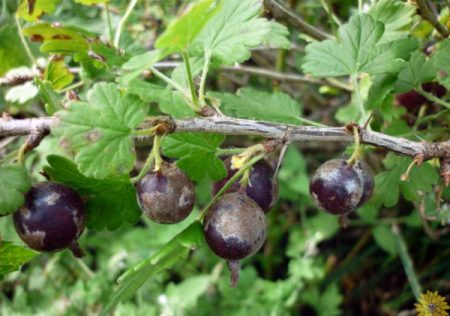
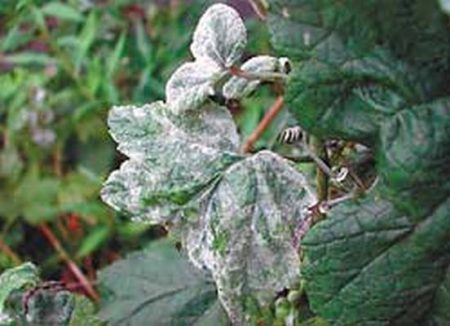
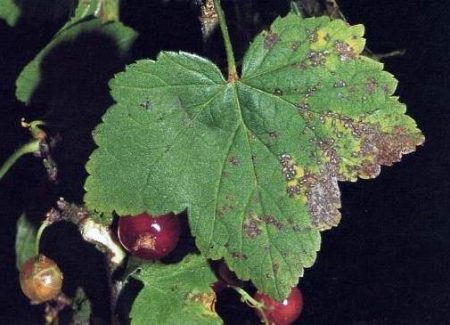
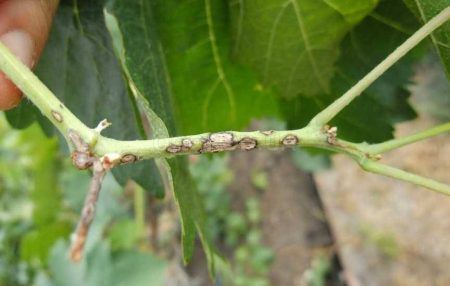
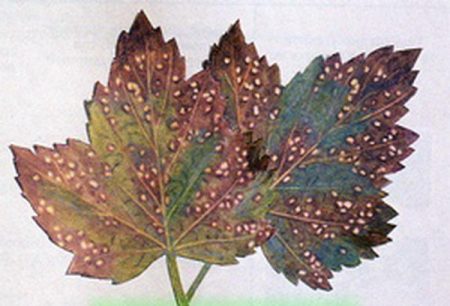
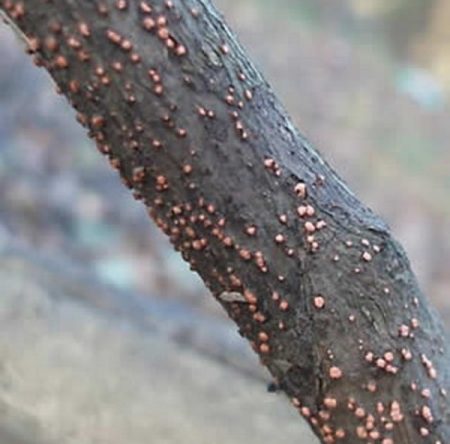
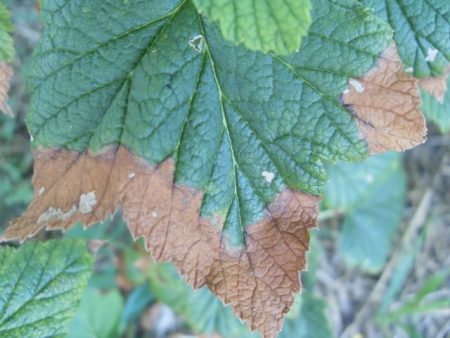


 (6 ratings, average: 3,50 out of 5)
(6 ratings, average: 3,50 out of 5) CUCUMBERS NEVER GET SICK, I'VE BEEN USING ONLY THIS FOR 40 YEARS! I SHARE A SECRET WITH YOU, CUCUMBERS ARE LIKE THE PICTURE!
CUCUMBERS NEVER GET SICK, I'VE BEEN USING ONLY THIS FOR 40 YEARS! I SHARE A SECRET WITH YOU, CUCUMBERS ARE LIKE THE PICTURE! You can dig a bucket of potatoes from each bush. Do you think these are fairy tales? Watch the video
You can dig a bucket of potatoes from each bush. Do you think these are fairy tales? Watch the video
 How our fellow gardeners work in Korea. There is a lot to learn and just fun to watch.
How our fellow gardeners work in Korea. There is a lot to learn and just fun to watch. Eye trainer. The author claims that with daily viewing, vision is restored. They don't charge money for views.
Eye trainer. The author claims that with daily viewing, vision is restored. They don't charge money for views. A 3-ingredient cake recipe in 30 minutes is better than Napoleon. Simple and very tasty.
A 3-ingredient cake recipe in 30 minutes is better than Napoleon. Simple and very tasty. Therapeutic exercises for cervical osteochondrosis. A complete set of exercises.
Therapeutic exercises for cervical osteochondrosis. A complete set of exercises. Which indoor plants match your zodiac sign?
Which indoor plants match your zodiac sign? What about them? Excursion to German dachas.
What about them? Excursion to German dachas.